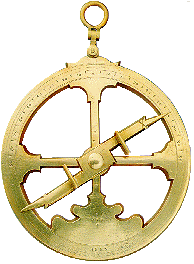What do the numbers and words mean?
Binocular Numbers and Terminology Explained
(all you ever wanted to know about binoculars but were too afraid to ask!)
As with any branch of science or technology the field of binoculars brings with it new and, to the uninitiated, confusing terminology. We hope this simple guide will turn you into an expert!
Magnification and Lens Size
You'll normally see binoculars referred to as 10x50 or 20x60 etc., but what do those number mean?
The first number is the magnification. Looking through our 10x50 pair objects will appear ten times closer than with the naked eye, 20x60s double that magnification.
A set described as 10-30x50 are variable zoom and can magnify by any amount from 10 to 30 times. These have a small lever near your right thumb to control magnification.
The second number is the size of the objective lens in mm. The objectives are the large lenses at the far end of the binoculars. Large objectives gather more light, doubling the lens diameter quadruples the light gathered. This is particularly important in poor light conditions, such as bird watch at dusk or astronomy. But while 100mm objectives offer excellent performance they make for a large pair of binoculars that are tiresome to hold and bulky. As with all things we seek a compromise that's rights for the way you use your binoculars.
Field of View (FOV)
Quite simply, the higher the magnification the less area you can see at once. This is expressed either in degrees or the number of metres visible at a range of 1000m, for example 4.3 degrees or 114m/1000.
If you're looking for that elusive deer or sea eagle you'll want a wide field of view to have a better chance of spotting it. With a narrow field of view you'll need to pan the binoculars around more and may miss the wildlife you're searching for. So we need a good balance between magnification and field of view.
Exit Pupil Size
This is another important factor in determining how well binoculars work in low light conditions. Exit pupil size is the diameter of the actual beams of light leaving the eyepieces.
It's calculated by diving the diameter of the objective lens by the magnification. So 10x60 binoculars would have an exit pupil size of 60/10 = 6mm.
In sunlight your eye's pupil will contract to a size of 2-4mm. But at night they'll open to 7mm. This varies with your age to an extent. If the light beam is wider than your pupil if can't all get through, so binoculars with 4mm exit pupil size seem as bright as those with 6mm in daylight. But in poor light your pupils may open to 6mm, so the binoculars with a 4mm exit pupil seem dimmer than those with 6mm.
As we get older the size our pupils open to decreases. An observer in their 50's may only have pupils which open to 5mm for example. To these people large exit pupils offer little advantage.
So what does this actually mean? Basically for daytime observation exit pupil size isn't much of an issue. For dusk (wildlife) or night (astronomy) use a larger 6-7mm exit pupil is a real boon.
Eye Relief (and Spectacle Wearers)
Eye relief is basically the amount in mm your can be from the eyepiece and see the whole field of view afforded by your binoculars. Clearly this is an issue for spectacle wearers as their eyes will be further back. When using binoculars with an eye relief of less than 10mm you're only seeing the centre of the image! A bit like masking off the outer part of your TV set.Most binoculars will have eye relief of 8-13mm. But our LE models have a figure of around 18mm, this can make all the difference to someone who wears glasses. We offer LE versions of our most popular models.
Prism Types
There are two types of Prism in common use, BAK-4 and BAK-7. BAK-7 prisms are cheaper and made of less dense glass. BAK-4 prisms are denser, dearer and transmit more light. We generally use BAK-4 in our binoculars. We use BAK-7 in a few of our less expensive general purpose models. Our competitors generally use BAK-7. The data sheet next to each pair in our shop will tell you.
Coatings
This is where the real difference between cheaply made (not always low cost!) and quality binoculars is to be found. It's a subject about which there is also a great deal of miss-information and confusion. We shall try to explain it simply and accurately.
Binocular lenses have optical coatings to improve the amount of light they gather. The coating reduces the amount of light which is reflected away and lost. Early binoculars only transmitted 50% of the light they gathered! Our coatings are incredibly thin and must be applied with equal thickness to a very high degree of accuracy. This is not a cheap process, that's why many brands cut corners!
Binoculars have at least 8 lenses. Some of these are cemented together, but for the rest there is an air to glass boundary which light must cross. It is on these boundaries that the coatings are important. In a conventional set of binoculars there are an incredible 20 glass to air transitions! Perhaps now you see why good coatings are vital. Without a good coating some light is lost on each air to glass transition.
© Strathspey Binoculars
Binocular Terminology

